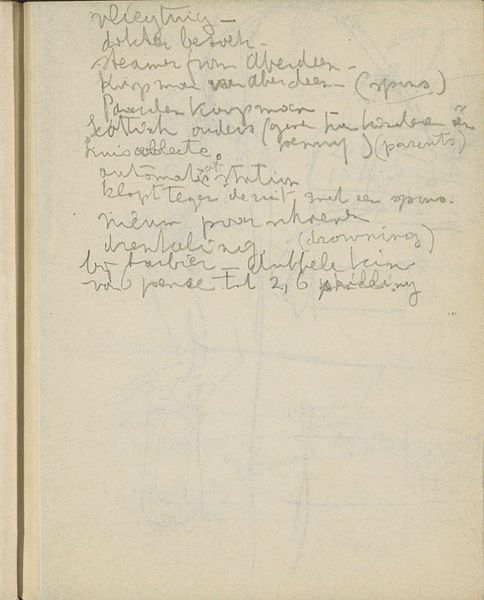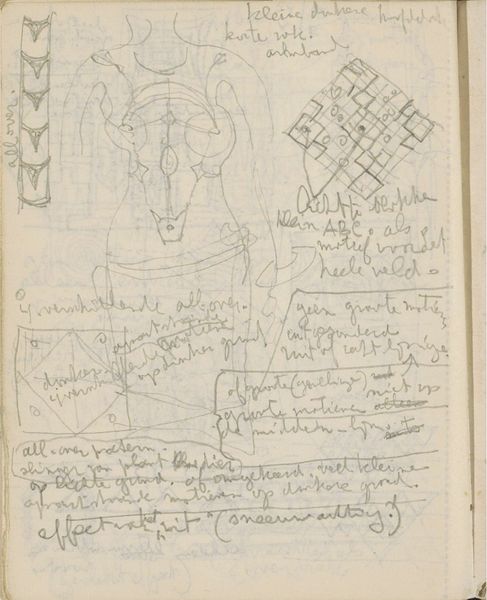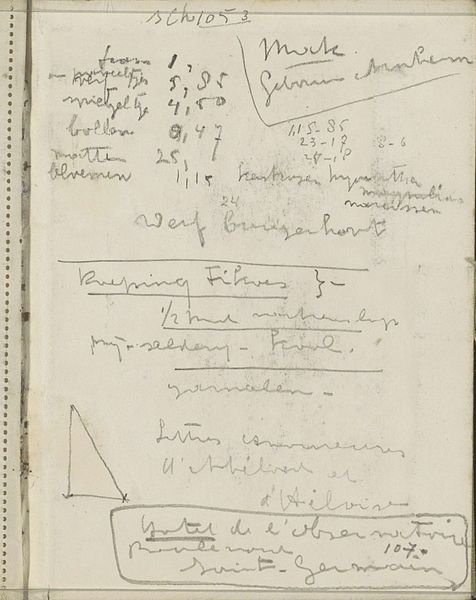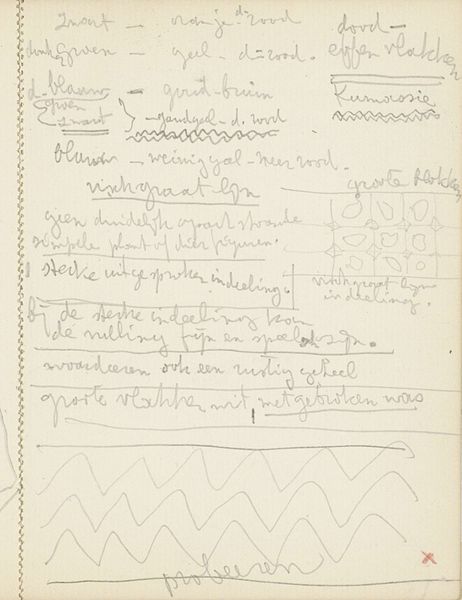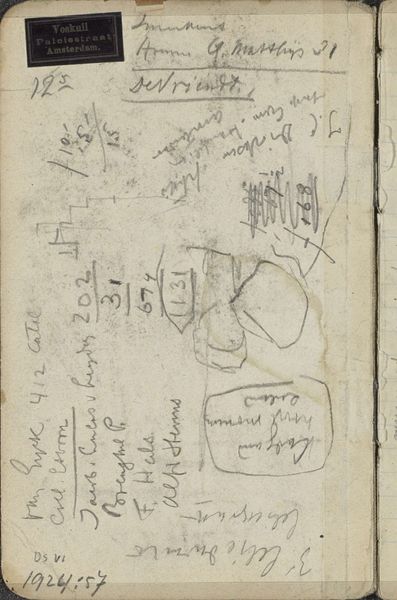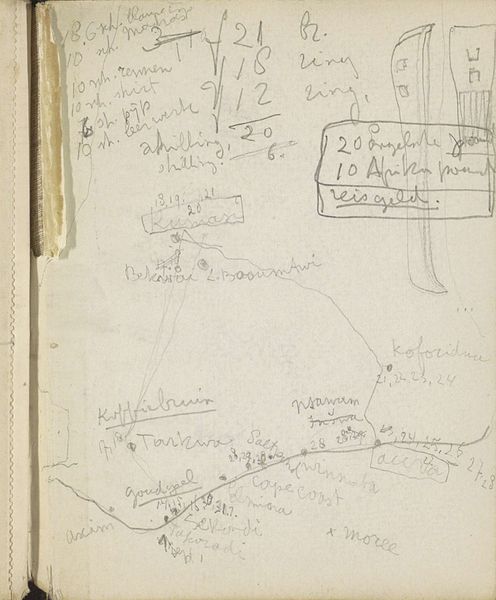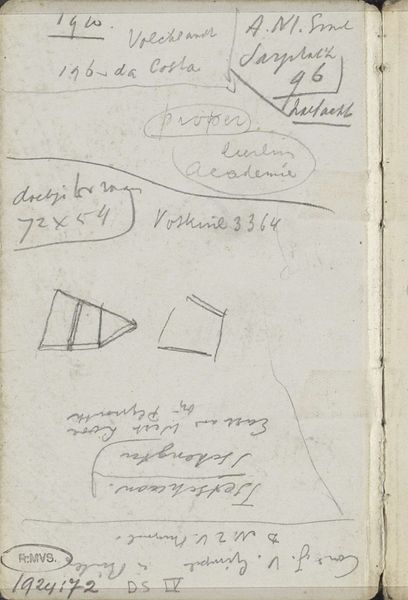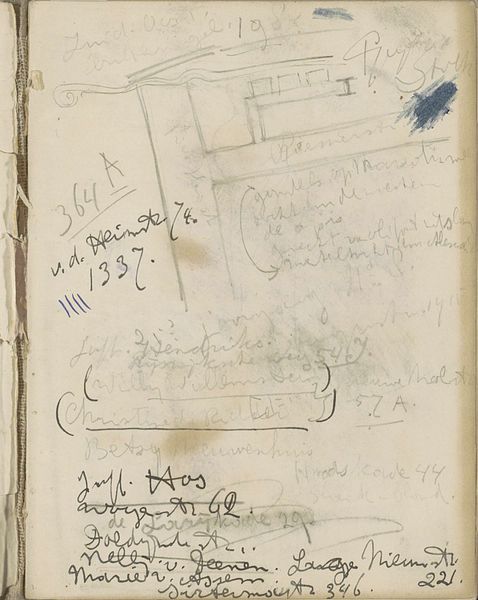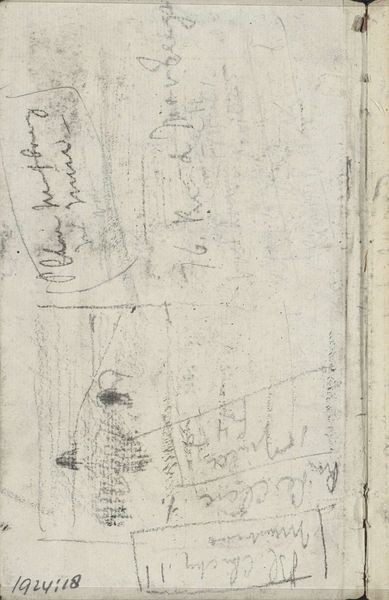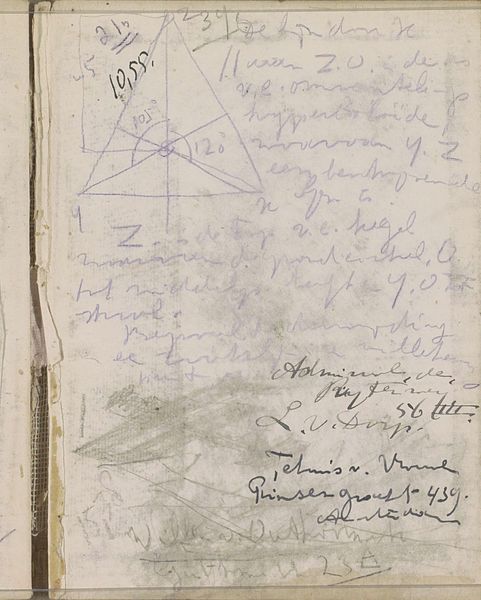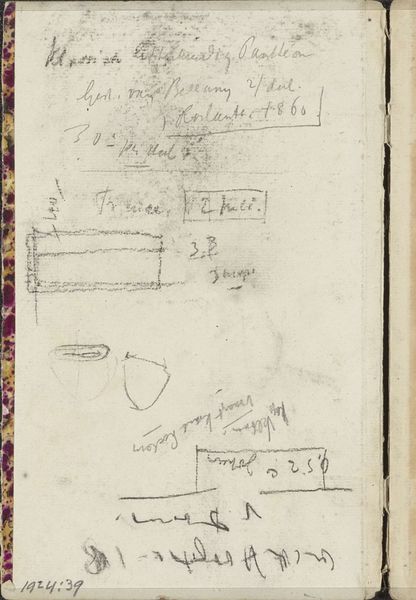
drawing, paper, pencil
#
drawing
#
paper
#
form
#
geometric
#
pencil
#
line
Copyright: Rijks Museum: Open Domain
Curator: Isn't this drawing just hypnotic? I could stare at it for ages. It's like peeking into someone's incredibly organized, yet totally chaotic mind. Editor: What grabs me immediately is the cross-cultural aesthetic. We're looking at "Decorative Patterns from Aba," rendered in pencil on paper, sometime between 1916 and 1945. Aba, as in, southeastern Nigeria. The patterns suggest an intersection of European geometric abstraction and indigenous West African design principles. Curator: Oh, definitely a meeting of worlds. The diamond shapes, the loops… they remind me of something I can't quite place. And the scribbled notes – part instructions, part stream of consciousness? What language is that, anyway? Editor: It seems to be Dutch, which raises intriguing questions. Who created these designs, and for what purpose? The colonial context is key. We must ask whether this drawing signifies appropriation, collaboration, or perhaps even resistance. Were these patterns intended for textiles, architectural embellishments, or something else entirely? Curator: I can see so many design opportunities with this drawing. It makes me think about breaking free from design norms, to consider a new decorative vocabulary rooted in personal experience and experimentation. Editor: Precisely. But we can't extract these patterns from their historical implications. The exchange, or imposition, of aesthetic values between colonizer and colonized warrants careful consideration, as it profoundly impacted cultural identity and self-expression on both sides. Curator: Hmmm, I’m still intrigued by its almost intimate feel—like flipping through a stranger's sketchbook, only this stranger is sketching my new favourite designs. Editor: And by examining this intersection, we may challenge dominant art narratives and enrich our appreciation of global artistic practices.
Comments
No comments
Be the first to comment and join the conversation on the ultimate creative platform.
